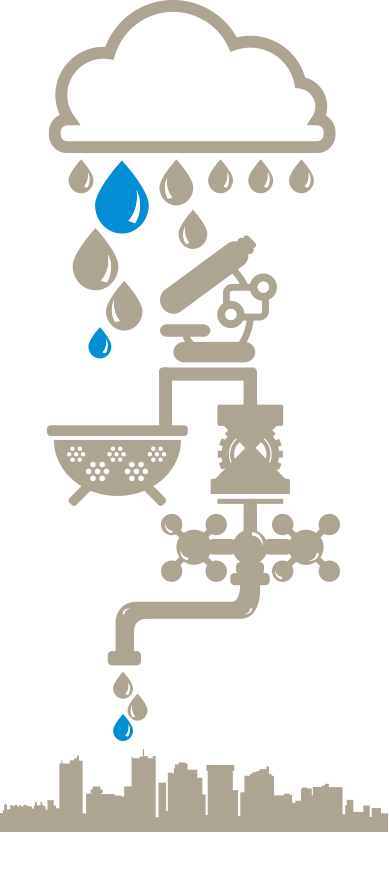Sustainability
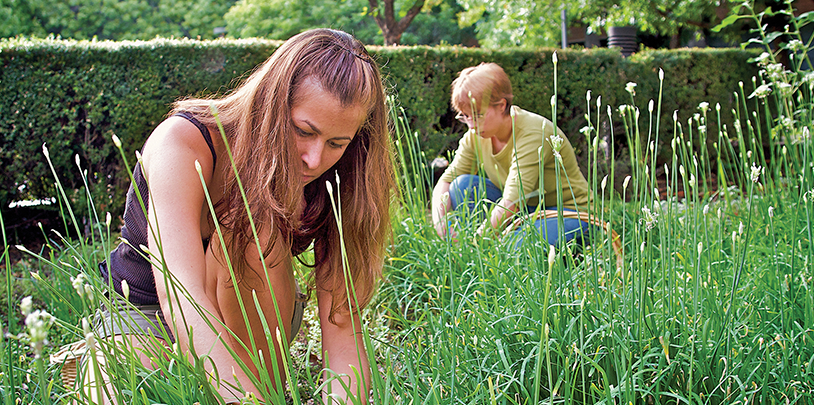
ASU confronts pressing issues of sustainability through a global interdisciplinary institute, the nation’s first school for sustainability, and through initiatives and efforts across the university.
ASU is committed to reducing power demand and decreasing the emission of greenhouse gases. One such effort includes researching strategies to fight the urban heat island (UHI), in which the day’s heat being absorbed into structures, streets and concrete, results in an increase in nighttime temperatures. This issue particularly affects large cities like Phoenix. ASU professors of architecture Harvey Bryan and Daniel Hoffman, along with doctoral student Akram Rosheidat, are developing strategies to combat UHI, including street shades, using less dense construction materials that hold less heat, and introducing additives to asphalt and concrete that reduce surface heat capacity.
minimizing waste
Arizona State University is committed to minimizing waste through diversion and aversion. ASU reduces water waste by the use of more efficient fixtures, better water management, and distribution of effluent water for use by mechanical and irrigation systems. Solid waste is diverted from the landfill through recycling, repurposing, reusing and composting. Waste is averted through reduced consumption. ASU plans to eliminate 90 percent of campus solid waste from the landfill by 2015. ASU expects to achieve carbon neutrality related to building-energy emissions by 2025 and become carbon-neutral by 2035.
As of June 30, 2012, ASU’s solar projects constitute the largest single-university solar installation in the country and now account for approximately 30 percent of the university's peak daytime power needs. Third-party contributors donated more than $132 million to ASU’s solar initiatives enabling 58 solar photovoltaic projects across the four campuses to generate 15.3 megawatts.
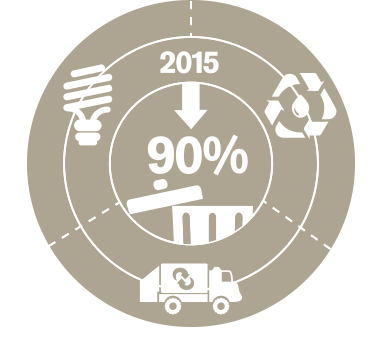
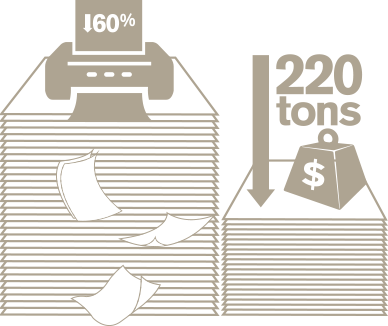
staff evaluations
ASU is the first university to integrate sustainability criteria into its staff-evaluation program through the Sustainability Literacy Program. All staff and management members are evaluated on the basis of their contributions to ASU’s sustainability efforts.
The ASU-Canon Strategic Alliance Partnership has taken on the challenge of transforming ASU into a Sustainable Digital University that capitalizes on technology to enhance effectiveness. Since 2007, ASU has reduced the number of personal printers on campus by 60 percent and copy-paper purchases have decreased by 220 tons per year.
The American College and University Presidents Climate Commitment is led by ASU President Michael Crow, who chairs ACUPCC’s steering committee. This committee is tasked with accelerating and supporting the efforts of more than 400 college and university presidents who have made the first sector-wide commitment to climate neutrality. This partnership enables colleges and universities to dramatically reduce greenhouse gas emissions and lower their energy bills by upgrading campus buildings – without using their capital budgets or increasing monthly operating expenses.
LEED certified buildings
ASU has established a Sustainable Design Policy for new construction and major renovation projects on all ASU campuses. ASU now requires Leadership in Energy and Environmental Design (LEED) Silver certification for all new construction of university-owned and operated buildings. Currently, ASU has 17 LEED Certified buildings, 10 Gold, five Silver, one Certified and one Platinum.
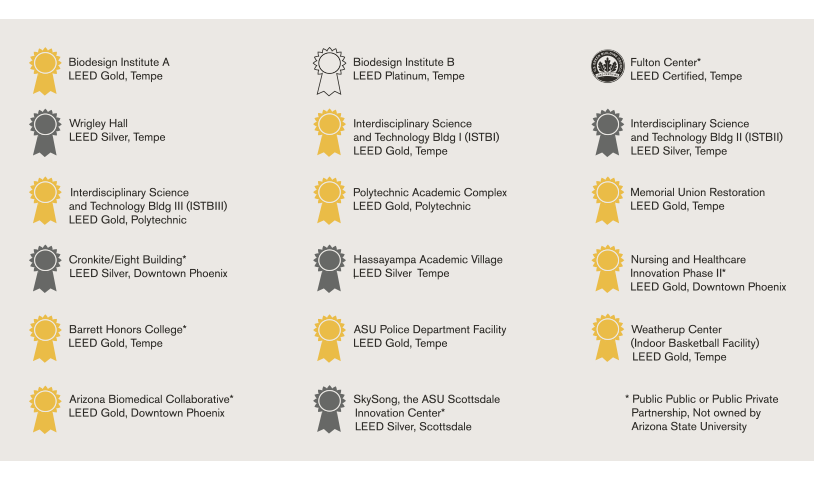
Biodesign Institute

The Biodesign Institute at Arizona State University represents the largest single investment in research infrastructure in Arizona, and has generated impressive returns for the community.
With support from federal, state and industry funding, ASU spearheaded a project utilizing photosynthetic microbes, called cyanobacteria, as a major source for the renewable production of carbon-neutral fuels for the United States. With Arizona's year-round sunshine, this project has the potential to be a catalyst for new industrial development that will contribute to high-quality employment and overall economic growth for the region. The initial two-year, $4.7 million project began in 2007, made possible by funding from Science Foundation Arizona, British Petroleum and ASU. Since 2009, a $5.2 million continuation of this project, led by ASU School of Life Sciences professor Wim Vermaas and Biodesign Institute researchers, has been funded by a branch of the U.S. Department of Energy, the Advanced Research Projects Agency-Energy (ARPA-E), and has achieved several critical research milestones.
Though most of the Earth is covered with water, very little is safe to drink. According to the World Health Organization, 2 billion people live in unsanitary conditions and do not have access to clean water.
Tapping the potential supplied by nature, the Biodesign Institute is providing clean water by developing new ways to use microbial communities for important tasks, like detoxifying contaminated water, wastewater, sludge, sediment or soil. A new biotechnology used to treat the worldwide problem of low quality water is the hydrogen-based membrane biofilm reactor (MBfR), an environmental biotechnology taken from fundamental research through commercialization activity. Now commercially available, MBfRs remove contaminants such as perchlorate, trichloroethene, selenate residuals and nitrates from water.
